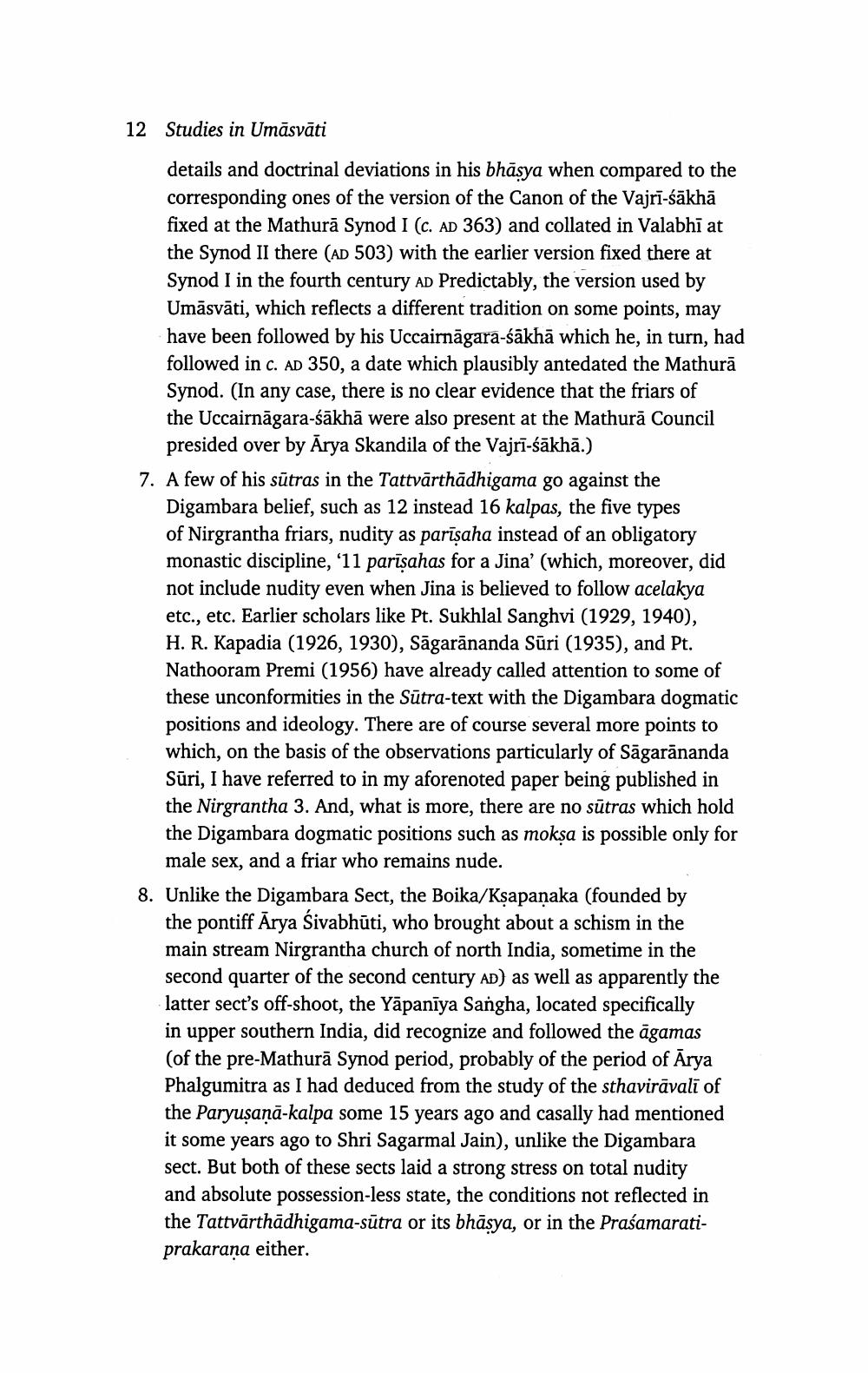________________
12
Studies in Umāsvāti
details and doctrinal deviations in his bhāsya when compared to the corresponding ones of the version of the Canon of the Vajrī-sākhā fixed at the Mathurā Synod I (C. AD 363) and collated in Valabhī at the Synod II there (AD 503) with the earlier version fixed there at Synod I in the fourth century AD Predictably, the version used by Umāsvāti, which reflects a different tradition on some points, may have been followed by his Uccairnāgara-śākhā which he, in turn, had followed in c. AD 350, a date which plausibly antedated the Mathurā Synod. (In any case, there is no clear evidence that the friars of the Uccairnāgara-śākhā were also present at the Mathurā Council
presided over by Arya Skandila of the Vajrī-sākhā.) 7. A few of his sūtras in the Tattvārthādhigama go against the
Digambara belief, such as 12 instead 16 kalpas, the five types of Nirgrantha friars, nudity as parīşaha instead of an obligatory monastic discipline, '11 parīşahas for a Jina' (which, moreover, did not include nudity even when Jina is believed to follow acelakya etc., etc. Earlier scholars like Pt. Sukhlal Sanghvi (1929, 1940), H. R. Kapadia (1926, 1930), Sāgarānanda Sūri (1935), and Pt. Nathooram Premi (1956) have already called attention to some of these unconformities in the Sūtra-text with the Digambara dogmatic positions and ideology. There are of course several more points to which, on the basis of the observations particularly of Sāgarānanda Sūri, I have referred to in my aforenoted paper being published in the Nirgrantha 3. And, what is more, there are no sūtras which hold the Digambara dogmatic positions such as mokṣa is possible only for
male sex, and a friar who remains nude. 8. Unlike the Digambara Sect, the Boika/Ksapanaka (founded by
the pontiff Arya Sivabhūti, who brought about a schism in the main stream Nirgrantha church of north India, sometime in the second quarter of the second century AD) as well as apparently the latter sect's off-shoot, the Yāpanīya Sangha, located specifically in upper southern India, did recognize and followed the āgamas (of the pre-Mathurā Synod period, probably of the period of Arya Phalgumitra as I had deduced from the study of the sthavirāvalī of the Paryusaņā-kalpa some 15 years ago and casally had mentioned it some years ago to Shri Sagarmal Jain), unlike the Digambara sect. But both of these sects laid a strong stress on total nudity and absolute possession-less state, the conditions not reflected in the Tattvārthādhigama-sūtra or its bhāsya, or in the Praśamaratiprakarana either.




